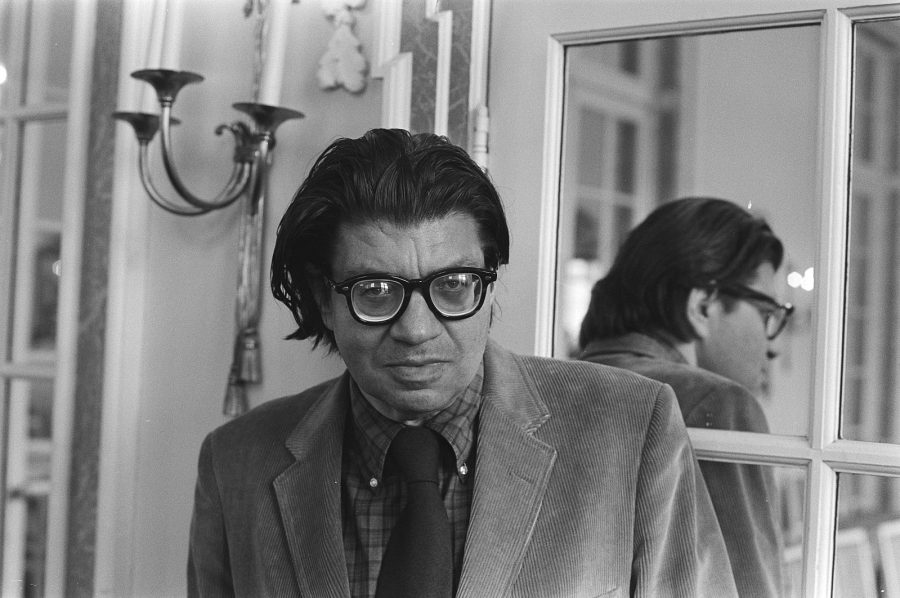Morton Feldman’s “Crippled Symmetry” is anything but conventional music — classical music concert-goers looking for easy-listening music may want to look elsewhere.
On Nov. 8, I entered Conrad Prebys Concert Hall to experience Morton Feldman’s “Crippled Symmetry,” a 90-minute piece for flutes, percussion, piano, and celeste. With a program in hand, I eagerly made my way into the dimly lit performance hall, ready to experience the feeling of being “simultaneously present and lost” per the program’s description. Frankly, the only emotions I got out of the music were confusion and anxiety.
To give the composer due diligence, Feldman purposefully composed “Crippled Symmetry” to be convoluted. In fact, Feldman was well-known during his life for leading the movement of indeterminate music, a musical style that incorporates much more freedom for performer interpretation than is conventional. Taking this into account, Feldman successfully created an indeterminate piece; throughout the performance, there were very few moments where the three performers (Alex Ishov on the flutes, Michael Jones on percussion, and Shaoai Ashley Zhang on the keyboards) lined up in a way that resembled “conventional” music. Given this piece’s length, its minimalistic style, and the incredibly subtle differences between the repeated musical motifs, respect must be given to the musicians’ stamina and skill, for they seemed completely in their element and ready to deliver a perfect performance.
The concert experience, on the other hand, was a different story. Humans naturally search for patterns and repetition to determine what is important, and “Crippled Symmetry,” true to its name, is almost the complete antithesis of structured music. Immediately, the first three motifs that the flute, piano, and vibraphone played together defined the piece’s atonal and freeform nature. In fact, it sounded as if each instrument was following its own rhythmic pattern as the entire piece seemed to lack the cohesion that ensemble music from the past always seemed to have. At times, the percussionist would be playing a regular, repeated rhythm while the flautist and pianist fluttered around without any regard for the meter.
In a similar vein to the tempo, the piece is also unstructured in its tonality. Most of the notes in the piece seemed almost randomly chosen, focusing more on the direction of the melodic line rather than if they were in tune. The few moments throughout the piece which sounded conventionally consonant were more due to chance rather than intention.
Additionally, the instrument’s themselves added another layer of complexity to the notes. Each musician was responsible for switching between two different instruments, and each combination of instruments (flute, bass flute, piano, celeste, vibraphone, and glockenspiel) added unique tonal textures to the piece that changed frequently. One minute the flute, celeste, and glockenspiel would chime out shrill, dissonant lines while in the next phrase, the bass flute and vibraphone would take over to mellow out the sound. As a whole, Feldman’s piece seemed more about making sure the notes and the textures created a feeling of unease and the experience of asymmetry rather than a memorable tune for the general public. With no clear tempo nor a defined tonality, this created an unsettling musical experience that was difficult to enjoy yet impossible to tune out.
To the average music listener, I would consider this piece incredibly difficult to digest. While I understand Feldman’s artistic goal was to create an image of a slightly off-balance tapestry, it would be difficult for someone who lacked a musical background to comprehend. The changing textures, lack of tonality, and relatively stable dynamic level gave the piece a noise-like quality, and appreciators of conventional classical music would likely find this piece extremely jarring to the ears. “Crippled Symmetry,” at times, seemed purposefully trying to generate harsh sounds through non-consonant intervals and strident combinations of instrument timbres. The emphasis on minimalism in the piece also made the 90-minute-long performance daunting for any listener, and I often found it difficult to focus on listening to the piece after hearing the same line of music being repeated several times. Notably, several audience members even decided to leave the concert hall halfway into the performance. With no real sense of progression towards a climax in the piece, the piece left me with a sense of unfulfillment at the end when the glockenspiel simply faded out.
Nevertheless, I have to recognize that the piece represents an important step towards what modern classical music is today. “Crippled Symmetry” was clearly an effort by Feldman to push music in a new direction, and while it may not be palatable to everyone, Feldman’s attempt at using music to elicit emotions through music in an unconventional way must be applauded. Furthermore, the performance itself felt incredibly polished and well-prepared, as the musicians had the endurance to last a 90-minute performance without any breaks in between. Perhaps in the future, “indeterminism” will grab a foothold on music and draw in listeners, but for now, it’s safe to say that “Crippled Symmetry” remains highly experimental.
Performance Grade: A
Music Grade: C
Composer: Morton Feldman
Venue: Conrad Prebys Concert Hall
Date: Nov 8, 2019
Image courtesy of Soundfly.














